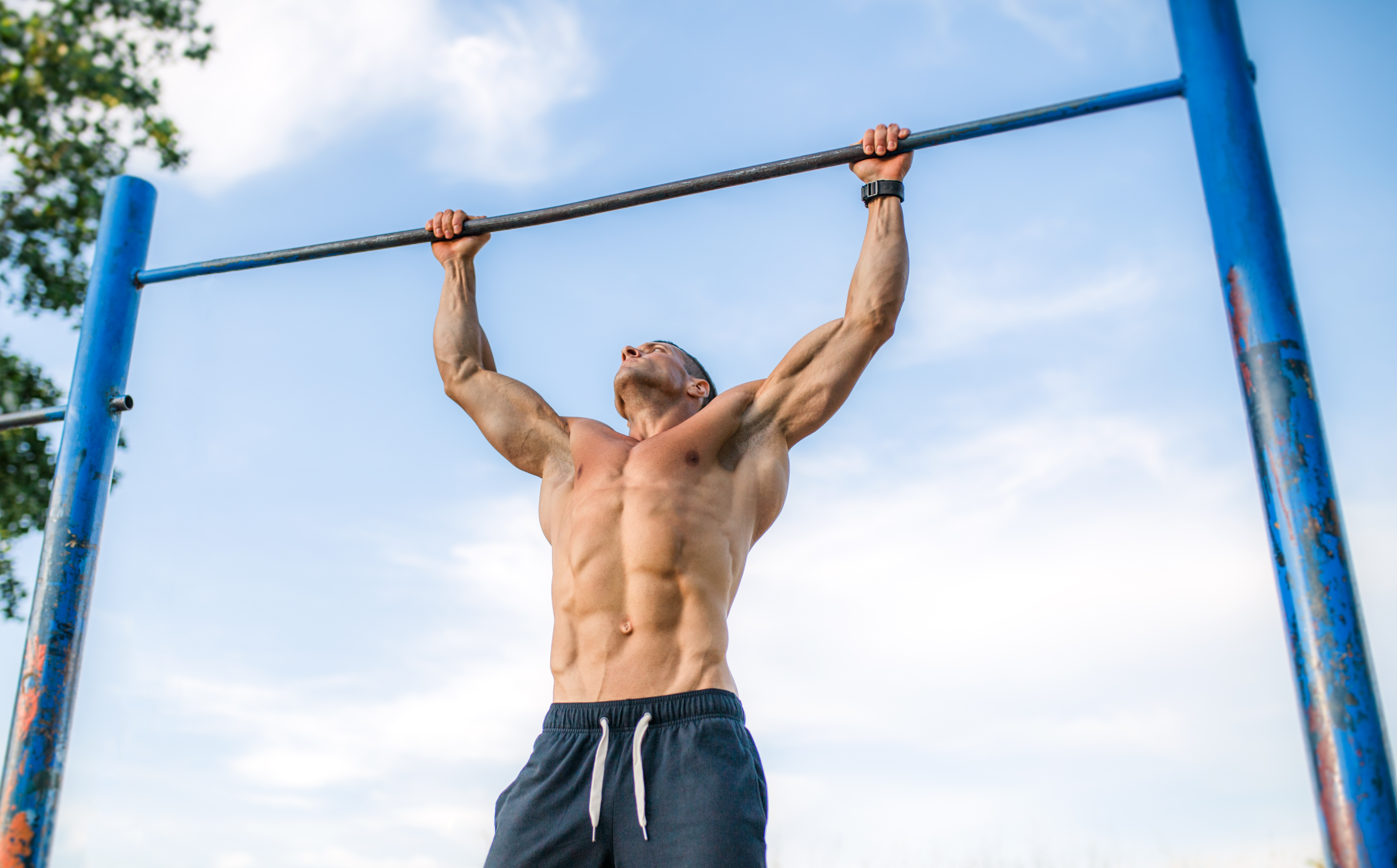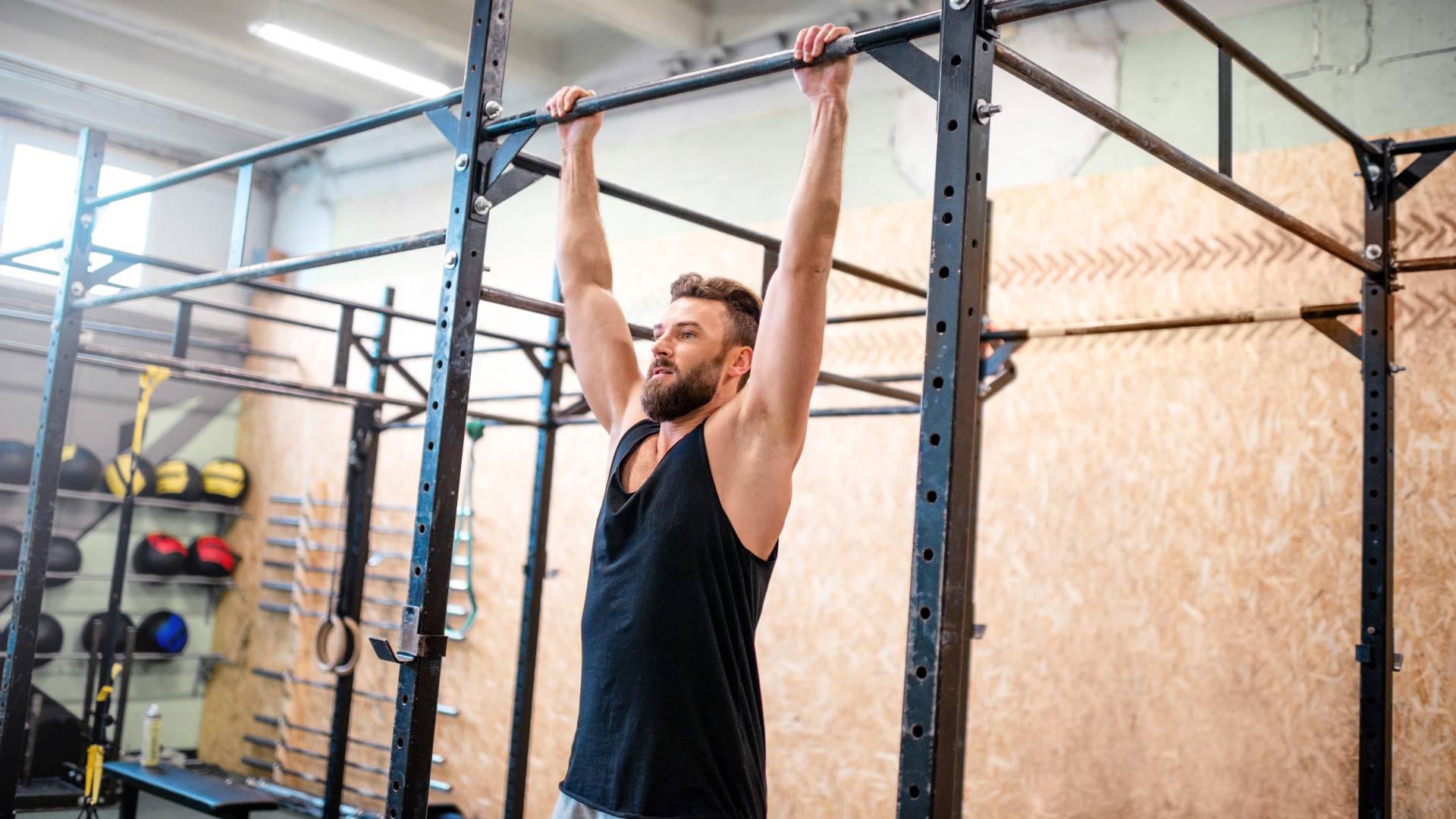
Bodyweight exercises like pull-ups and push-ups test and build upper body strength without weights. Known for strengthening the back and chest, respectively, deltoids (shoulders) and arms, the main benefit of these exercises is developing a robust torso.
But I love the dead hang for several reasons: this exercise strengthens the shoulders, forearms and wrists, stretches your upper back, arms and lats, activates your core and helps decompress the spine.
You don’t need anything other than a pull-up bar or similar to do it, and you don’t even need to move. If you’re interested, here are the benefits of dead hangs, how the exercise could help boost posture and stretch and strengthen your upper body and how to add them to your exercise program.
What does a dead hang do for your body?

The dead hang involves hanging from a bar and simply holding the hang position. It can be used as a gateway into pull-ups and chin-ups building the requisite strength for them, especially as it mimics the initiation of the pull-up from the straight-arm position.
It's also handy as a warm-up or cool-down for workouts as a way to stretch and strengthen the shoulders, back, and arms before upper body workouts that include push or pull-based exercises.
You’ll develop wrist and grip strength which is foundational for technical lifts like deadlifts, snatches and cleans and any exercises that require you to grip an Olympic bar or more gymnastic-based exercises using a pull-up bar. Moreover, dead hangs are functional and mimic very natural human activities. We've been swinging and hanging about for a very long time, after all, it's in our DNA.
How to do a dead hang
- Grip the bar shoulder-width apart using an overhand grip and fully wrap your fingers and thumbs
- Lift your feet away from the floor and hang from the bar
- Pull your shoulders down your back and away from your ears and squeeze them slightly together
- Keep your arms straight and relax your upper body while holding tension in your core muscles. Your legs should be heavy
- Slightly tuck your pelvis toward you and look ahead
- Hold, then release the bar.
Benefits of dead hangs
You only have to look sideways at popular workout styles like CrossFit and hit TV shows like Gladiators to see we love to hang. Whether it’s swinging along on a set of rings or performing muscle-ups in the gym, we can be found dangling just about anywhere.
If your goal is to strengthen your upper body and core muscles and build flexibility, the dead hang is an exercise to try. I love how low-impact hanging is because you’re using isometric contraction, meaning the active muscles don’t move through a range of motion or shorten or lengthen. You can do this exercise just about anywhere, even getting primal and hanging from a tree branch if you don’t have a pull-up bar.
It’s also great for developing shoulder mobility and stability, which could help you better perform bodyweight movements like pull-ups and push-ups, improve posture and build a more resilient upper body.
How long should you do dead hangs?
It depends on what you’re adding dead hangs for. If you need a stretch, add it to the start or finish of a workout. To build grip or upper body strength, consider holding for a set amount of time (20 seconds or more), and repeating for several sets as part of your upper body strength programs.
If you haven’t tried it, build healthy shoulders safely — don’t rush. You can try an active hang, which means lots of muscle engagement, squeezing the shoulder blades and focusing on full-body contraction. For a passive hang, try to completely relax and allow gravity to do its work.
To begin with, start with your feet on the floor and bend your knees to create some slack. Lift one leg or both as you feel more comfortable. For a progression, try using rings, which are less stable and harder to control, recruiting your muscles more heavily to keep the rings in place.
As mentioned, the hang initiates a pull-up, therefore initially recruiting many of the muscles active during the move. And research has even shown that “hanging by the hands” using a horizontal bar can improve endurance over time. Personally, I love the challenge and spend the time focusing on my breathing, and it helps prepare my wrists and hands before lifting heavy weights.
I always feel lengthened and stretched out after a few minutes on the bar before a workout and I love how it makes my spine and back feel after a day spent writing at my desk.
Verdict
If you sit for prolonged periods or favor heavy weightlifting in the gym, the dead hang is perfect for stretching tight muscles and relieving tension in the spine.
Primarily targeting the lats, shoulders, arms and upper traps, you’ll find stretching these muscles and engaging your core should help improve posture, when performed regularly over time and in conjunction with other strength exercises for posture, mobility work and plenty of daily movement.
If you have access to a door frame, trees, pull-up bars, local parks, or gymnastic rings, you can do a dead hang, making it one of the most accessible ways to develop upper body strength.
More from Tom's Guide
- I'm a personal trainer — the candlestick roll is the best bodyweight exercise for your barbell squats
- You only need a kettlebell and this 30-minute workout to build full-body muscle and boost your metabolism
- 4 reasons you’re not building muscle in the gym — according to a strength and conditioning coach







